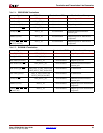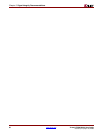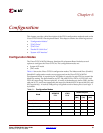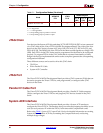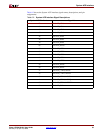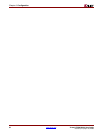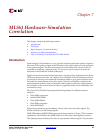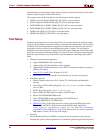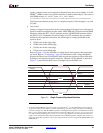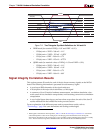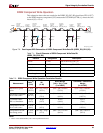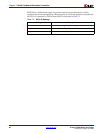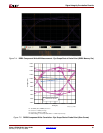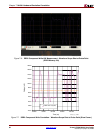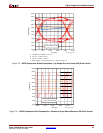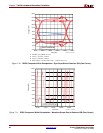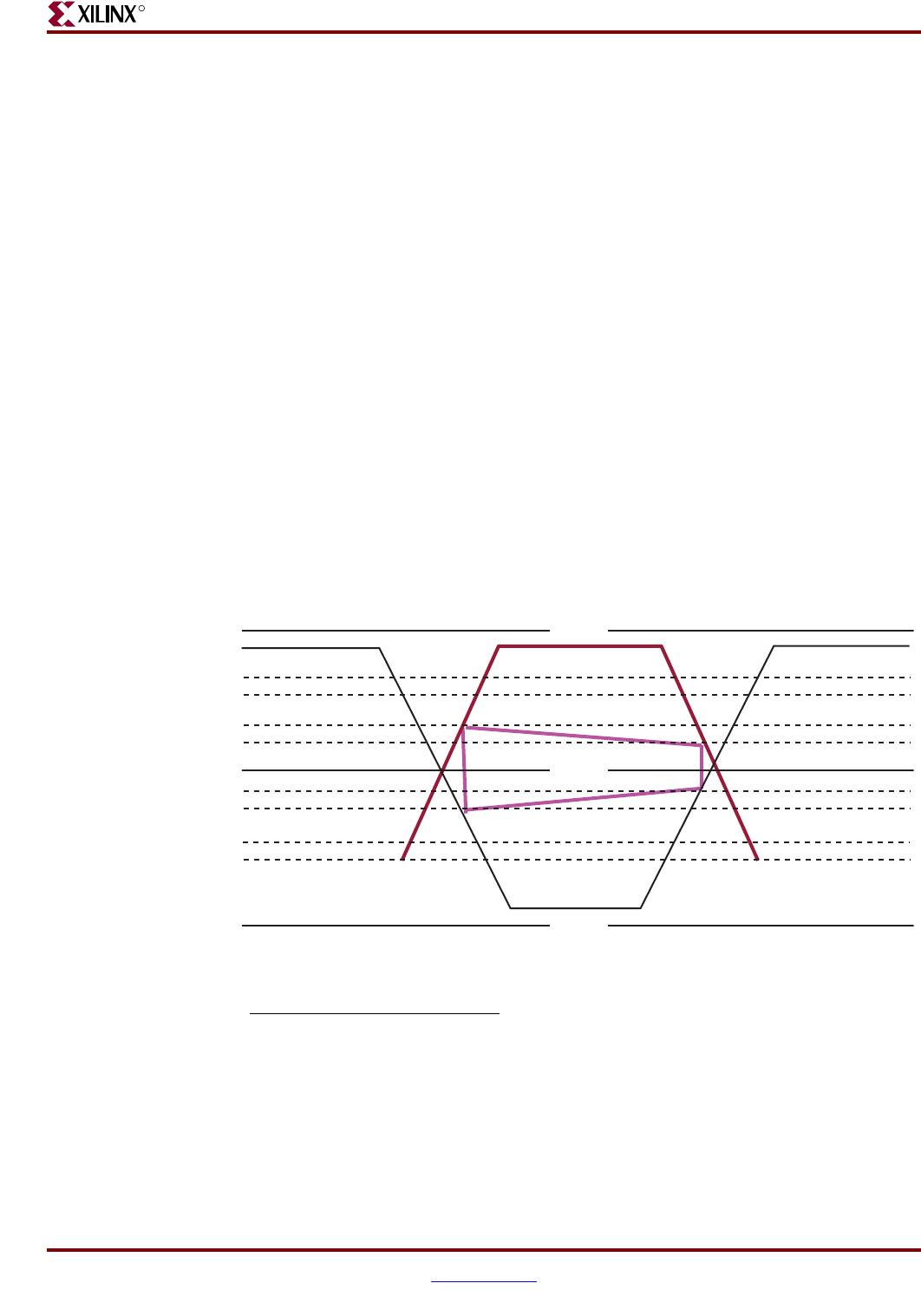
Virtex-5 FPGA ML561 User Guide www.xilinx.com 57
UG199 (v1.2) April 19, 2008
Test Setup
R
strobe, a random value can be applied to data bits from one cycle to another. A 63-bit
PRBS6
(1)
(PRBS of order 6) test pattern stimulus is used for this analysis. The value of
this PRBS6 string is 63’h03F5_66ED_2717_9461, that is:
63’b000001111110101011001101110110100100111000101111001010001100001.
The HyperLynx stimulus setup is for: a 2-sequence repeat, 10 bits skipped, 1 eye, and
0% jitter.
• Test criteria
Quality of a signal is measured in terms of the opening of the signal eye at the receiver
input for both the amplitude and the width. DDR2 SDRAM (Component and DIMM)
interfaces utilize the SSTL_18 I/O standard, and the QDRII SRAM interface utilizes
the HSTL 1.8V I/O standard. For each of these two I/O standards, the eye mask is
defined by the trapezoid enclosed by the following four voltage thresholds at the
receiver input:
♦ VIH(ac)-min at the rising edge
♦ VIH(dc)-min at the falling edge
♦ VIL(dc)-max at the rising edge
♦ VIL(ac)-max at the falling edge
Refer to Figure 7-1 for the definition of voltage levels with regard to the trapezoidal
eye mask. Refer to “Terminology,” page 9 for definitions of the voltage thresholds.
Because the HyperLynx SI simulation software does not support a trapezoidal mask
definition, two separate triangular masks for VIH and VIL are defined, as shown in
Figure 7-2, such that the third vertex of triangle falls on the VREF axis.
1. A maximal-length PRBS test sequence of order n generates all (2
n
– 1), n-bit combinations of test sequences
(except all 0s). Thus the test sequence contains one n-bit long consecutive string of 1s and two (n-1)-bit long
consecutive strings of 0s. With the PRBS6 test pattern, at the highest test frequency of 333 MHz (that is, the bit
time is 1.5 ns), measurements in this setup result in a maximum settling time of (1.5 ns * 5) = 7.5 ns for a logic
Low, and a maximum settling time of (1.5 ns * 6) = 9 ns for a logic High. 7.5 ns is sufficient time for the test
signal to reach a steady state before the next transition. Thus a PRBS test pattern of higher order, such as 7 or
9, does not change the eye pattern, as proven by sample simulation of one test signal with PRBS6, PRBS7, and
PRBS9 stimuli.
Figure 7-1: Single Trapezoid Eye Mask Definition
VOH(dc)
VOL(dc)
VOH(ac)
VOL(ac)
UG199_c7_01_062707
VIH(ac)
VIL(ac)
VIH(dc)
VIL(dc)
VDDQ
VSS
VREF



